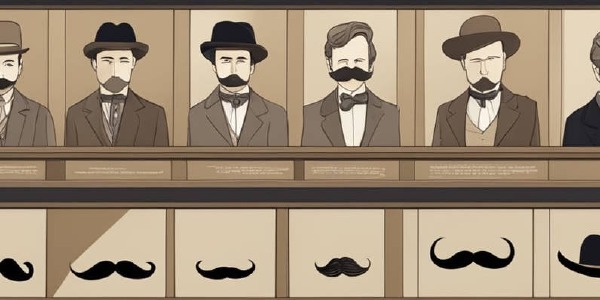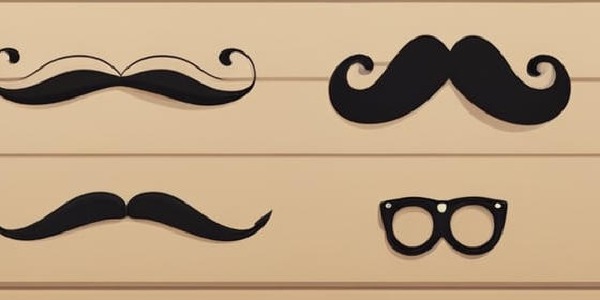How Less Can Be More: Cardboard Mustaches and the Minimalist Movement
The minimalist movement has been gaining popularity in recent years, with people embracing the idea of living with less and simplifying their lives. This trend has extended beyond just decluttering homes and adopting a more minimalist lifestyle, but has also influenced art, music, and even fashion. One interesting example of this is the rising popularity of cardboard mustaches.
Key Takeaways
- The minimalist movement has its roots in the mid-20th century, and has gained popularity in recent years as a lifestyle choice focused on living with less.
- Minimalism has also influenced art and music, with artists and composers creating works that celebrate simplicity and repetition.
- The rising popularity of cardboard mustaches is a nod to the minimalist movement, and a reminder that sometimes, the simplest things can be the most impactful.
Origins of Minimalism
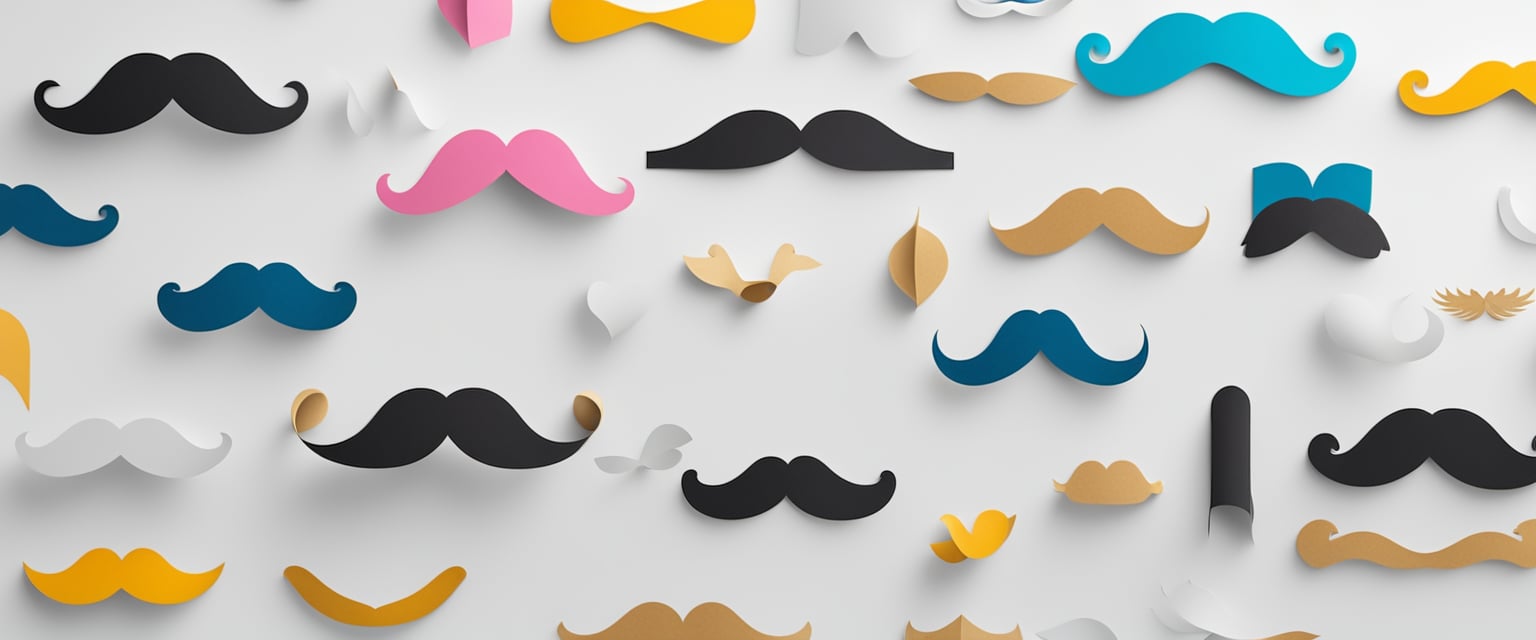
The Minimalist Movement emerged in the 1960s in New York and London as a reaction against the excesses of Abstract Expressionism. Minimalism was characterized by its simplicity, clarity, and precision. It was a response to the chaotic and emotional nature of Abstract Expressionism, which was seen as too subjective and self-indulgent.
Minimalism was influenced by the work of John Cage, Donald Judd, Dan Flavin, Philip Glass, Julius Eastman, Carl Andre, Frank Stella, La Monte Young, Terry Riley, Steve Reich, and others. These artists rejected the traditional idea of art as a representation of reality and instead focused on the materials and the physicality of the artwork itself.
In music, Minimalism was characterized by repetitive patterns and structures, such as the "Piano Phase" by Steve Reich. In visual art, Minimalism was characterized by the use of simple geometric shapes, such as squares and rectangles, and industrial materials, such as steel and concrete.
Minimalism was also influenced by the design philosophy of Steve Jobs, who believed that less is more. Jobs believed that simplicity and elegance were the key to good design, and this philosophy was reflected in Apple's products.
Overall, Minimalism was a movement that sought to strip away the excess and focus on the essence of art and design. It was a reaction against the excesses of the past and a celebration of simplicity and clarity.
Minimalism as a Lifestyle
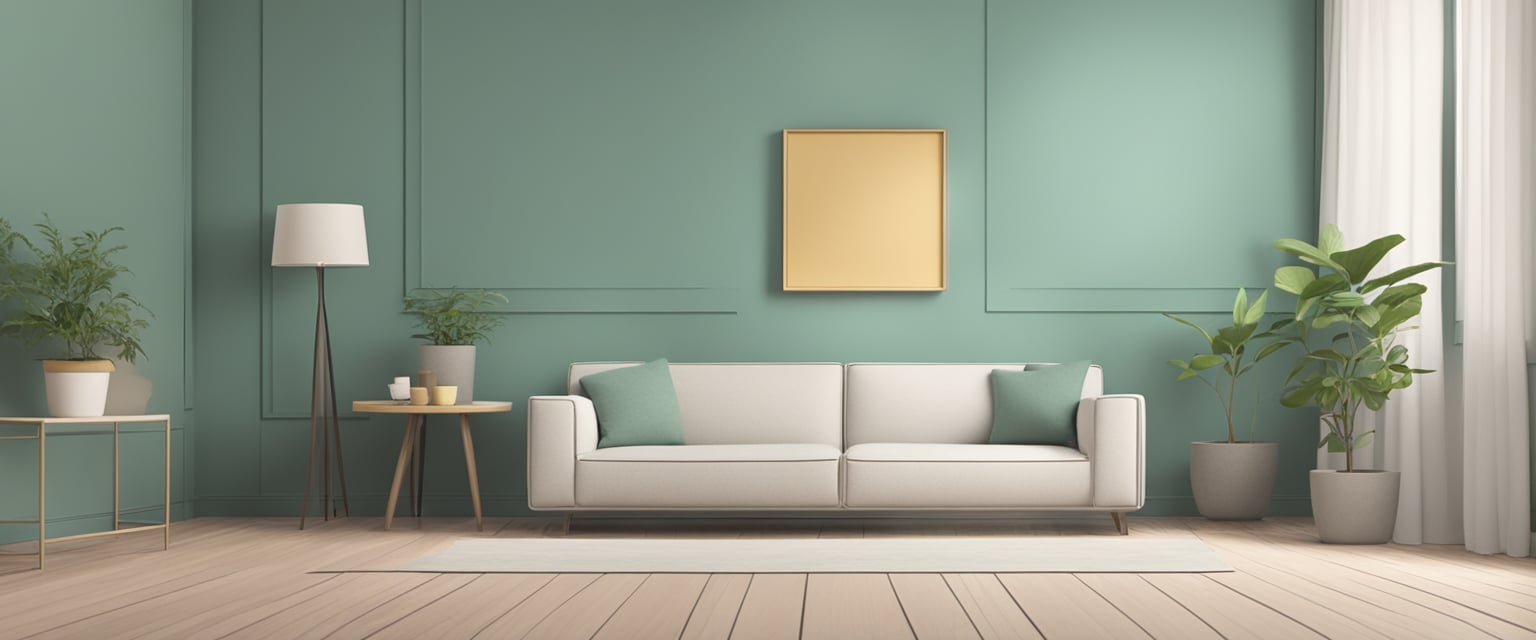
Minimalism is more than just a design aesthetic; it is a way of life. It is a conscious decision to live with less and focus on what truly matters. In this section, we will explore the principles of minimalism, its impact on happiness, consumerism, eco-friendliness, and personal experiences.
Minimalist Principles
The minimalist lifestyle is based on the principle that less is more. It is about simplifying your life by decluttering and letting go of things that no longer serve a purpose. By doing so, you create more space, both physically and mentally, which allows you to focus on the things that truly matter.
Minimalism is also about valuing experiences over possessions. It is about finding joy in the simple things in life, such as spending time with loved ones, enjoying nature, or pursuing a passion. By focusing on experiences rather than material possessions, you can achieve a greater sense of contentment and fulfillment.
Impact of Minimalism on Happiness
Studies have shown that minimalism can have a positive impact on happiness. By reducing clutter and simplifying your life, you can reduce stress and increase feelings of contentment and joy. Minimalism also encourages mindfulness, which can help you live in the present moment and appreciate the little things in life.
Minimalism and Consumerism
Minimalism is a direct response to consumerism, which is the idea that buying more material goods will lead to happiness and fulfillment. By embracing minimalism, you can break free from the cycle of excess and shopping, and instead focus on what truly matters in life.
Eco-Friendly Minimalism
Minimalism can also have a positive impact on the environment. By consuming less and focusing on eco-friendly products and practices, you can reduce your carbon footprint and contribute to a healthier planet. This can include practices such as decluttering, using a capsule wardrobe, and buying second-hand or sustainable products.
Minimalism and Personal Experiences
Minimalism is a highly personal journey, and everyone's experience is unique. Some people may find that minimalism helps them achieve a greater sense of freedom and balance in their lives, while others may find that it helps them create more meaningful memories. Whatever your personal experience may be, minimalism can be a powerful tool for creating a more intentional and fulfilling life.
In conclusion, minimalism is about living with intention and focusing on what truly matters. By embracing minimalism as a lifestyle, you can reduce stress, increase happiness, and contribute to a healthier planet.
Minimalism in Art and Music
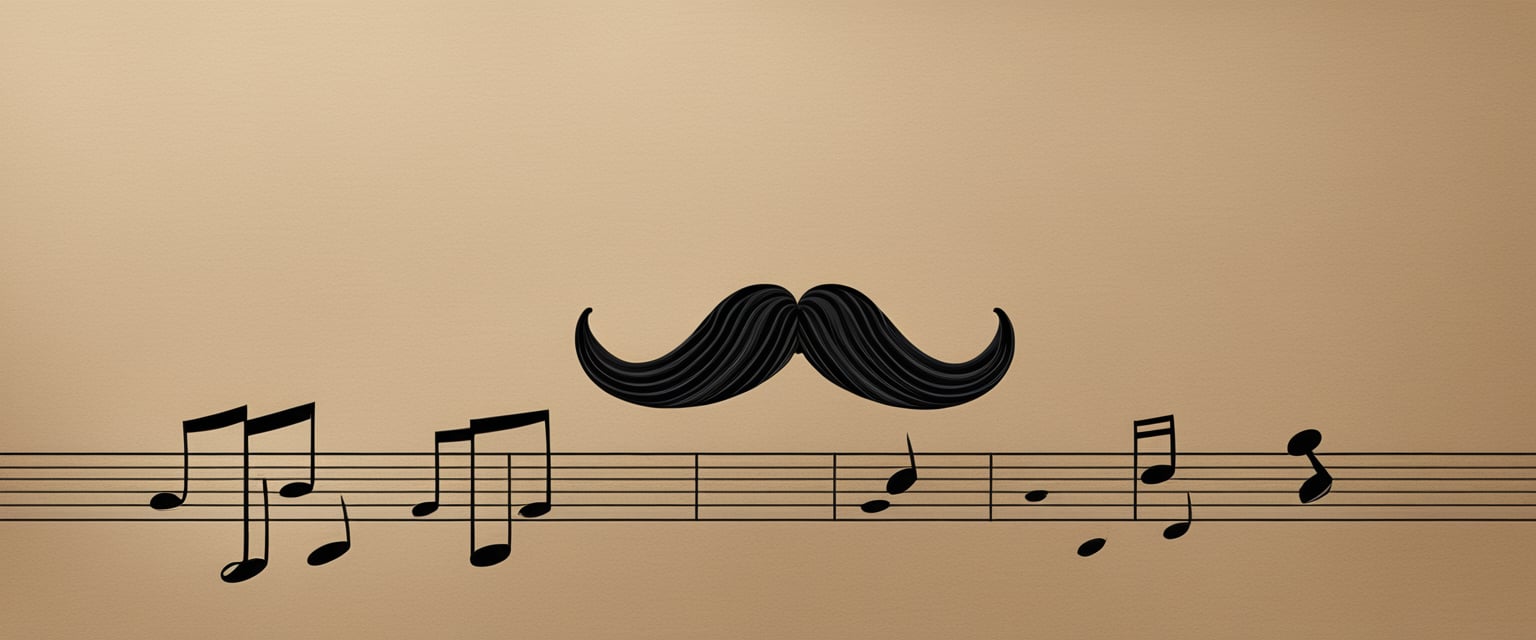
Minimalism in Visual Art
In the 1960s, the Minimalist Movement emerged as a response to the excesses of Abstract Expressionism. Artists such as Donald Judd and Dan Flavin created works that focused on the essential qualities of the materials they used. Judd's sculptures, for example, were made of industrial materials such as steel and aluminum, and were designed to be experienced in the physical space they occupied. Flavin's fluorescent light installations were similarly minimal, consisting of simple geometric forms that explored the interplay of light and space.
Minimalist artists were interested in reducing art to its most basic elements, and in doing so, they challenged traditional notions of what art could be. By eliminating extraneous details and focusing on the essential qualities of their materials, they created works that were both visually striking and intellectually stimulating.
Minimalism in Music
Like the Minimalist artists, composers in the Minimalist Movement sought to strip away the excesses of their predecessors. John Cage, one of the pioneers of the movement, rejected traditional notions of melody and rhythm, instead creating works that were based on chance operations. His piece 4'33", for example, consists of four minutes and thirty-three seconds of silence, during which the ambient sounds of the environment are the "music."
Other composers, such as Philip Glass, Julius Eastman, La Monte Young, Terry Riley, and Steve Reich, focused on the repetition of simple musical patterns. Glass's "Piano Phase," for example, consists of two pianos playing the same simple pattern of notes, but with one piano gradually shifting out of phase with the other. This creates a hypnotic effect that is both meditative and mesmerizing.
In Minimalist music, melody and rhythm are often reduced to their most basic elements, with a focus on pulses and patterns rather than complex harmonies and melodies. Nico Muhly, a contemporary composer who has been influenced by Minimalism, has described the movement as "a longing for less," a desire to strip away the excesses of modern life and focus on what is essential.
Cardboard Mustaches and Minimalism
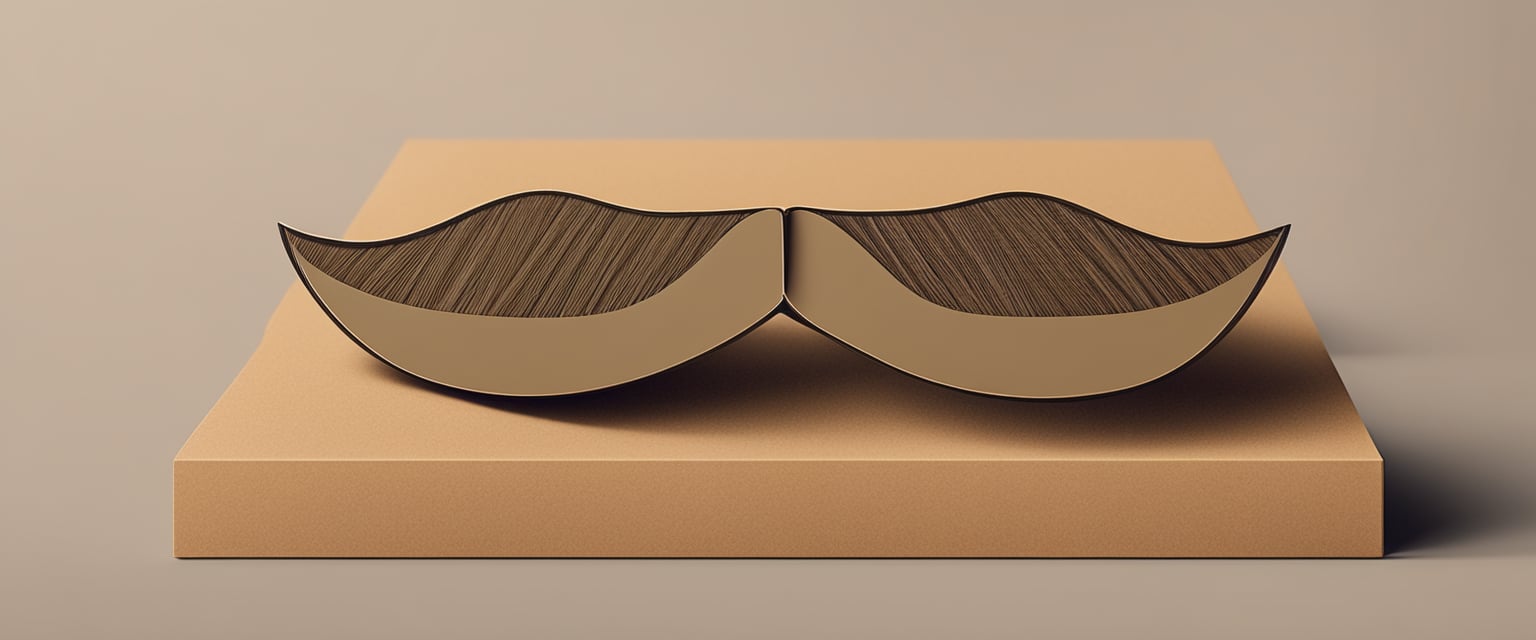
Minimalism is a lifestyle that emphasizes the importance of living with less. It is a way of life that has gained popularity in recent years due to its ability to help people simplify their lives and focus on what truly matters. One of the ways that people have embraced minimalism is through the use of cardboard mustaches.
Cardboard mustaches are a simple and inexpensive accessory that can be used to add a touch of humor and whimsy to any outfit. They are made from recycled cardboard and can be easily customized to suit any individual's style. By embracing the use of cardboard mustaches, people are able to express their individuality while still adhering to the principles of minimalism.
The use of cardboard mustaches also speaks to the importance of vision in the minimalist movement. By embracing a minimalist lifestyle, individuals are able to focus on their vision for their lives and eliminate distractions that may hinder their progress. The use of cardboard mustaches is a way for individuals to express their vision for their lives and showcase their unique personalities.
In addition to vision, the minimalist movement also emphasizes the importance of emptiness. By eliminating excess possessions and focusing on what truly matters, individuals are able to create more space in their lives for the things that bring them joy. The use of cardboard mustaches is a way for individuals to embrace this concept of emptiness and focus on the things that truly matter.
Overall, the use of cardboard mustaches in the minimalist movement serves as a reminder that less can truly be more. By embracing a minimalist lifestyle and incorporating simple accessories like cardboard mustaches, individuals are able to simplify their lives and focus on what truly matters.
Conclusion

In conclusion, the minimalist movement and the use of cardboard mustaches demonstrate that less can indeed be more. Minimalism is not just about decluttering physical possessions, but also about reducing stress, finding balance, and prioritizing experiences over material possessions. By embracing a minimalist lifestyle, individuals can find contentment and joy in the simple things in life.
The cardboard mustache, as a symbol of the minimalist movement, represents the value of simplicity and eco-friendliness. It encourages individuals to reduce their consumption of material possessions and focus on experiences that bring happiness and fulfillment.
Moreover, the minimalist movement promotes mindfulness and abstract expressionism, allowing individuals to live in the present moment and appreciate the beauty of their surroundings. This, in turn, can lead to a reduction in anxiety and an increase in overall well-being.
Overall, the minimalist movement and the use of cardboard mustaches offer a refreshing perspective on modern-day consumerism. They encourage individuals to question their values and prioritize what truly matters in life. By doing so, individuals can find freedom, balance, and happiness in a world that often values material possessions over human experiences.
Frequently Asked Questions

What is the minimalist movement and its principles?
The minimalist movement is a design and lifestyle trend that focuses on simplicity and functionality. Its principles include reducing unnecessary elements and simplifying design to its essential elements. Minimalism embraces the idea that less is more, and that simplicity can lead to a more fulfilling and meaningful life.
What are the benefits of minimalist design?
Minimalist design has several benefits, including increased functionality, improved clarity, and reduced visual clutter. By removing unnecessary elements, minimalist design can help to create a more streamlined and efficient user experience. It can also improve the overall aesthetic of a design, making it more visually appealing and easier to understand.
How has minimalism impacted architecture?
Minimalism has had a significant impact on architecture, particularly in the areas of modern and contemporary design. Minimalist architecture emphasizes clean lines, simple forms, and the use of natural materials. It also focuses on creating a sense of openness and space, allowing for a more organic and fluid relationship between the interior and exterior of a building.
What is the history of minimalism as a design movement?
Minimalism as a design movement emerged in the 1960s, primarily as a reaction to the excesses of consumer culture and the increasingly complex and cluttered nature of design. It was influenced by various art movements, including abstract expressionism, and sought to strip away unnecessary elements in favor of simplicity and clarity.
How can minimalism be applied to interior design?
Minimalism can be applied to interior design by focusing on simplicity, functionality, and the use of natural materials. This can involve reducing clutter, using a limited color palette, and incorporating clean lines and simple forms. Minimalist interior design also emphasizes the importance of negative space and the use of light to create a sense of openness and tranquility.
What are some examples of minimalist music?
Minimalist music is a genre of contemporary classical music that emphasizes simplicity, repetition, and subtle variations in melody and rhythm. Some examples of minimalist music include the works of composers such as Steve Reich, Philip Glass, and Terry Riley. These composers often use repetitive patterns and gradual changes in dynamics and texture to create a hypnotic and meditative effect.



